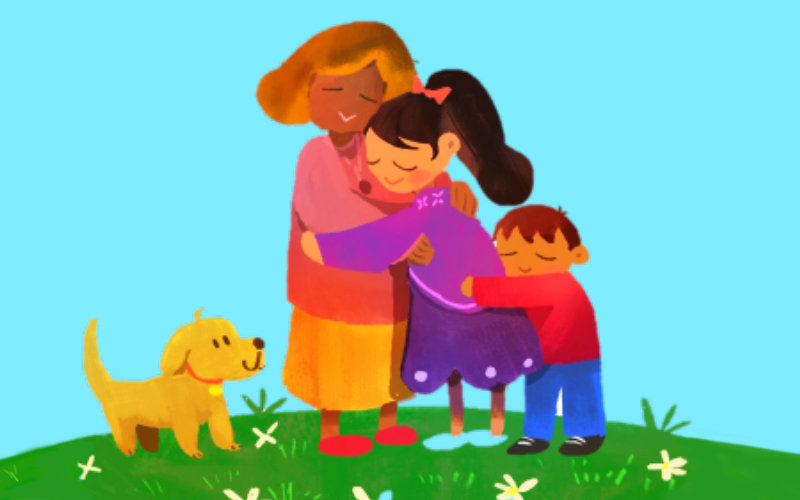
In the aftermath of the devastating Hurricane Maria, frightened adults suffered concerns about their families and friends, shelter, food and getting their lives back to something resembling normal.
Little, however, was heard about how the island’s youngest residents were doing.
Shu-Chen “Jenny” Yen, CSUF associate professor of child and adolescent studies, was focused on how the island’s young children were responding to the hurricane, how they felt and were thinking about the disaster. So she went into action, creating a storybook to help the children of Puerto Rico cope, to understand what had happened to their island, their homes, their families.
“Social stories were originally created for special education students detailing the proper behavior they should follow in their classrooms,” explains the educator, who holds a doctorate in early childhood development from the University of Missouri-Columbia. “Later, the idea was adopted to help children understand and cope with events in their lives: new babies, going to school, losing a grandparent.”
Yen’s first creation came in response to the 9-11 terrorist attacks. While she was at work, her daughter was watching the television and seeing her grandmother getting upset. By the time Yen got home, her daughter was crying. She explained to her daughter in simple language what had happened and then redirected her stress to ways her daughter could do something positive.
The formula was the genesis of the books she created in the aftermath of the 9-11 incident and for children affected by natural disasters in Taiwan, China and the Philippines.
What do you write about? What messages are you trying to convey?
My main focus is to explain what has happened in language that very young children can understand. They might be scared simply because they don’t exactly know what is going on. The books should comfort them, reassure them of their families’ unconditional love and give them a focus other than the natural disaster.
I have found that some children may feel guilty if their family is fine but others aren’t. So in my social stories I tell them what they can do to help others.
How do you go about creating these books?
I study the news of what has happened and then explain it in a format that young children can understand, then I write about how children can redirect their fears and give them positive reinforcements. I work with an artist, usually someone who is from that culture or who has spent time in the country.
In the case of Puerto Rico, I am a member of the National Association for the Education of Young Children (NAEYC), an organization representing early childhood education teachers, center directors and others. (Yen has served as vice president and secretary of the California affiliate and served on its advisory council.) Through NAEYC, I was able to meet with the Puerto Rico affiliate president and to work with the organization to make sure that what we wrote and how we wrote it, was culturally sensitive and accurate.
I also made sure that when the book was completed, it would be welcomed in the country and used. I have received a lot of letters and pictures from teachers and children sharing their appreciation for the books. That’s how I know that they work.
What’s next?
I’m already working on a book for the children in Indonesia who suffered through the recent earthquake and tsunami. I am working with a Cal State Fullerton alumna who has been teaching in Indonesia for two years and a University of London graduate student who is a native Indonesian, as well as an Asian art student from UCLA to create the art. Our goal is to ship books to that country in December.
It takes time, so I’m working on a set of generic scenarios so I can respond more quickly. Unfortunately, after a couple of weeks, most people tend to forget about what has happened but those in the communities are still suffering.
Yen’s book for the children of Puerto Rico, “After the Hurricane: Can We Fix It? Yes, We Can!” is available in digital format. More information is available on the following website.